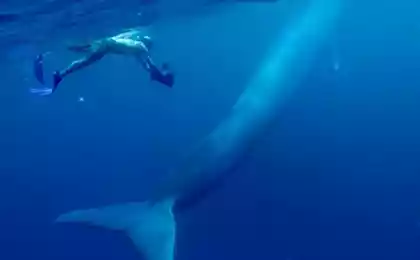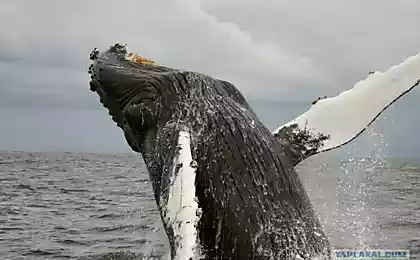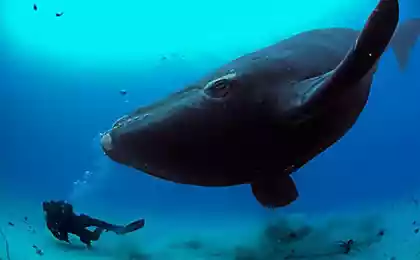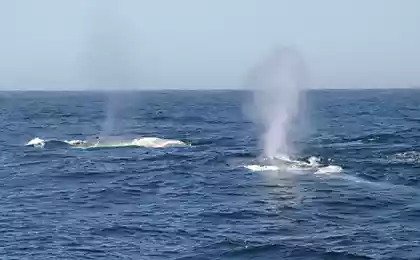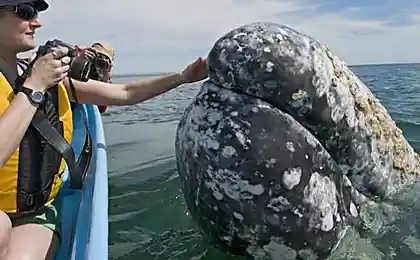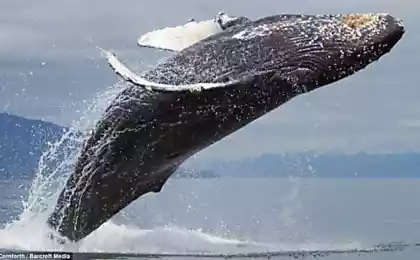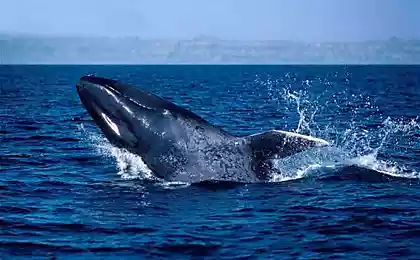699
Most friendly whales in the world
What could be better than a huge pat resident of the seas and oceans? Just kiss him on the forehead! This opportunity is available to tourists in Laguna San Ignacio in Mexico, where there are the most friendly in the world of whales.
(Total 13 photos)
via bigpicture
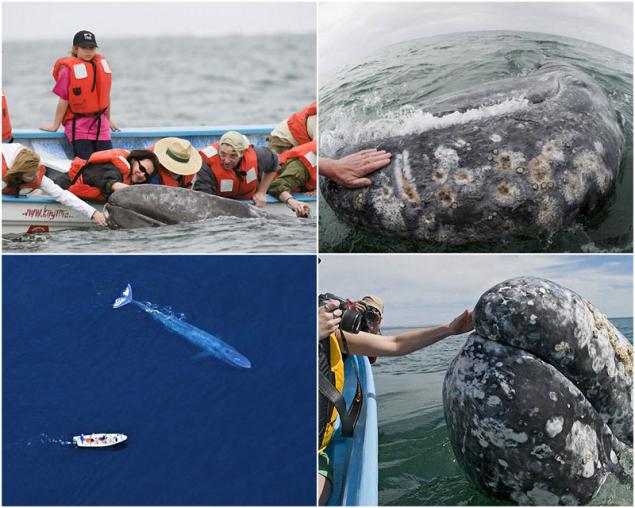
1. Friendly whales greet visitors to Laguna San Ignacio in Mexico. (BARCROFT MEDIA)

2. This wildlife lovers showed impressive animal known zoologist and presenter of the BBC Mark Karvandayn coming to this area for over 25 years. (Mark Carwardine, BARCROFT MEDIA LTD)
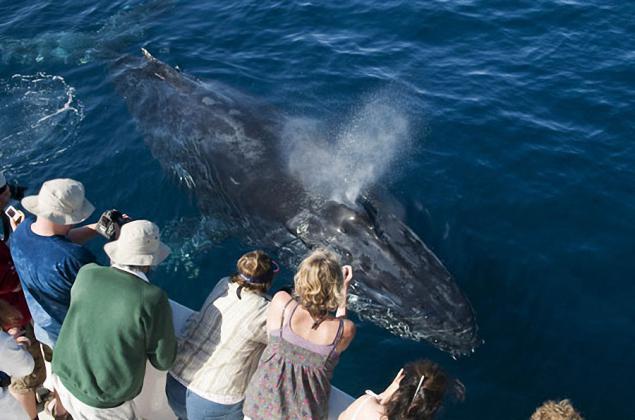
3. "To see how this huge friendly whale swims up to the boat and looks you straight in the eye - it's just an unforgettable feeling." (Mark Carwardine, BARCROFT MEDIA LTD)

4. "Sometimes they even allow people to pat them on the huge language or peck on the head," - says Mark, who is on the BBC 2 program, "Last chance to see" with Stephen Fry. (Mark Carwardine, BARCROFT MEDIA LTD)

5. Mark is very concerned about the preservation of whales and whale watching considers important way to draw public attention to these wonderful animals. (Mark Carwardine, BARCROFT MEDIA LTD)
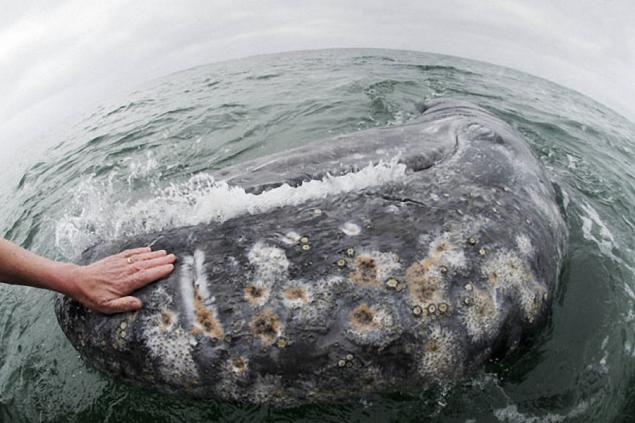
6. In addition to the gray whales swim to the boats blue whales and humpbacks, which are often turned over to one side to look at the passengers. (Mark Carwardine, BARCROFT MEDIA LTD)
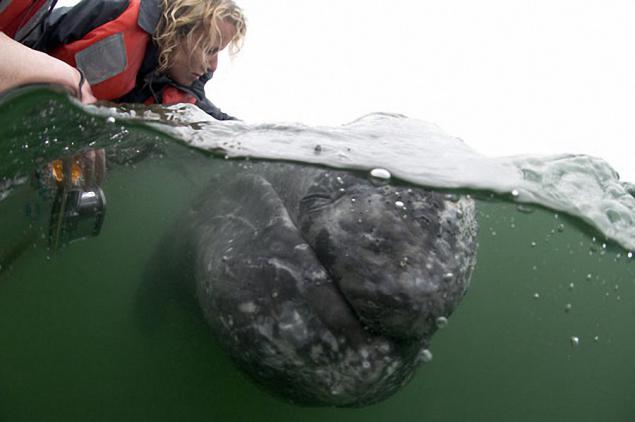
7. These whales begin their journey in the Bering Sea and swim for 20 thousand kilometers, which is one of the longest migrations. They went from the Pacific Ocean in December and did not eat until they reached their northern feeding areas five months later. (Mark Carwardine, BARCROFT MEDIA LTD)
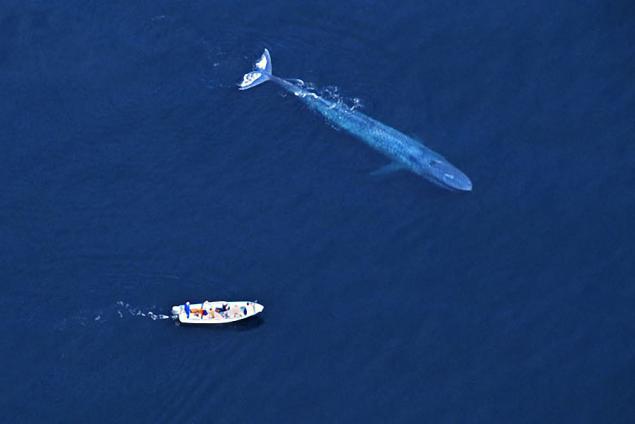
8. adjusters blue whales at a speed of 10-12 kilometers per hour, often changing direction. When persecution comes in a straight line at speeds of up to 24 kilometers per hour, starting up small fountains every 30-40 seconds. (Mark Carwardine, BARCROFT MEDIA LTD)

9. At rest is held under water for 10-20 minutes. After a deep dive on the surface there is usually top of the head with a blowhole. Releasing fountain, blue whale slowly and smoothly bends the broad back. (Mark Carwardine, BARCROFT MEDIA LTD)
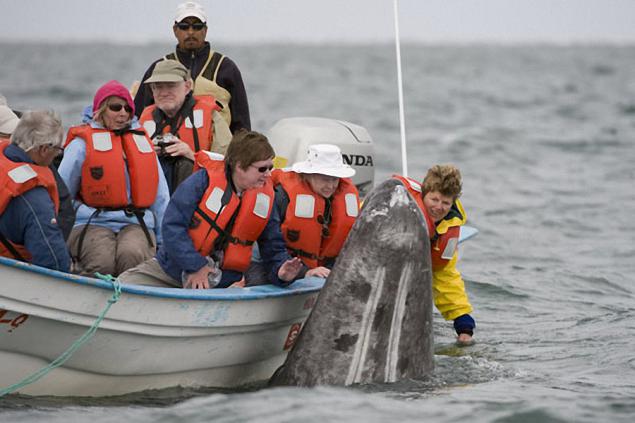
10. The gray whale is one of the oldest mammals - age species has about 30 million years. (Mark Carwardine, BARCROFT MEDIA LTD)
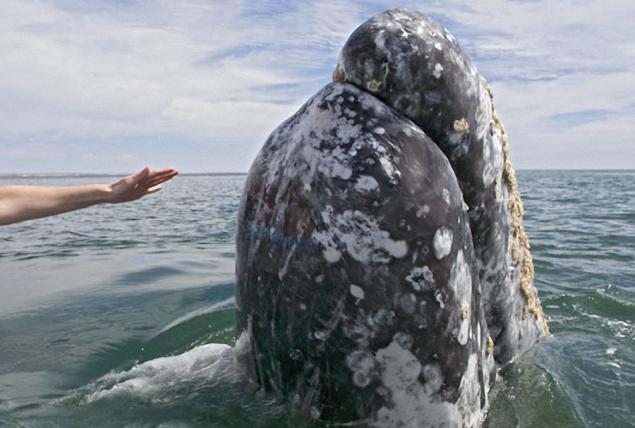
11. In the past, the gray whale was one of the main commercial species of whales because of its accessibility. As of 1853-1856. its strength in the waters of California is estimated at 30 thousand. However, the enhanced fishery led to the almost complete extermination of the species. (Mark Carwardine, BARCROFT MEDIA LTD)
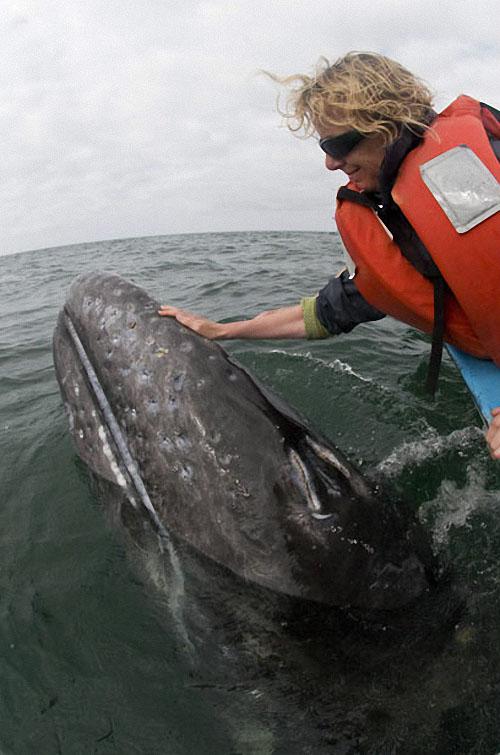
12. Humpback whales usually stay near the coast only in areas of large concentrations of krill and fish out into the open sea. Sometimes, they enter the bays. In the deep waters come mainly during migration. (Mark Carwardine, BARCROFT MEDIA LTD)
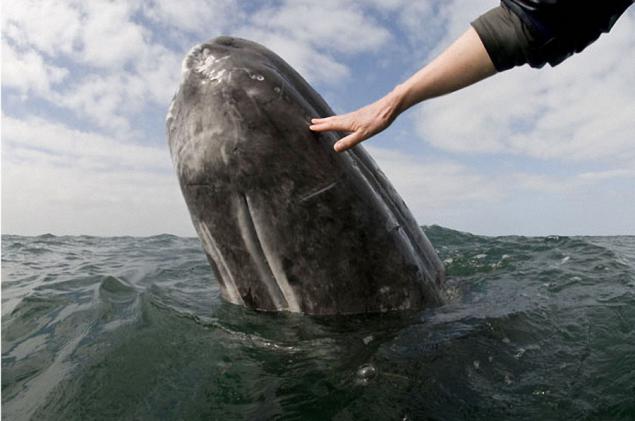
13. Humpback whale slug more than true whales, his speed migrations at no more than 8-15 km / h. The maximum speed recorded the wounded whales - up to 27 km / h. At the same time, the humpback whale - one of the most energetic and acrobatic large whales, whose behavior, including a spectacular jumping out of the water, attracts the attention of tourists. (Mark Carwardine, BARCROFT MEDIA LTD)
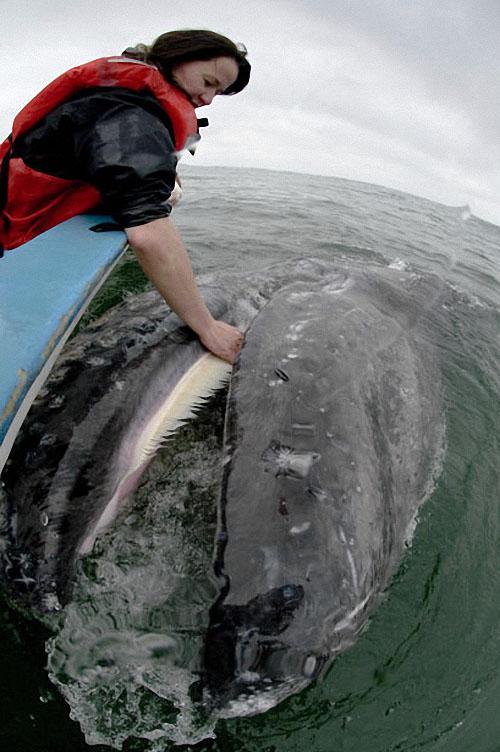
Source:
(Total 13 photos)
via bigpicture

1. Friendly whales greet visitors to Laguna San Ignacio in Mexico. (BARCROFT MEDIA)

2. This wildlife lovers showed impressive animal known zoologist and presenter of the BBC Mark Karvandayn coming to this area for over 25 years. (Mark Carwardine, BARCROFT MEDIA LTD)

3. "To see how this huge friendly whale swims up to the boat and looks you straight in the eye - it's just an unforgettable feeling." (Mark Carwardine, BARCROFT MEDIA LTD)

4. "Sometimes they even allow people to pat them on the huge language or peck on the head," - says Mark, who is on the BBC 2 program, "Last chance to see" with Stephen Fry. (Mark Carwardine, BARCROFT MEDIA LTD)

5. Mark is very concerned about the preservation of whales and whale watching considers important way to draw public attention to these wonderful animals. (Mark Carwardine, BARCROFT MEDIA LTD)

6. In addition to the gray whales swim to the boats blue whales and humpbacks, which are often turned over to one side to look at the passengers. (Mark Carwardine, BARCROFT MEDIA LTD)

7. These whales begin their journey in the Bering Sea and swim for 20 thousand kilometers, which is one of the longest migrations. They went from the Pacific Ocean in December and did not eat until they reached their northern feeding areas five months later. (Mark Carwardine, BARCROFT MEDIA LTD)

8. adjusters blue whales at a speed of 10-12 kilometers per hour, often changing direction. When persecution comes in a straight line at speeds of up to 24 kilometers per hour, starting up small fountains every 30-40 seconds. (Mark Carwardine, BARCROFT MEDIA LTD)

9. At rest is held under water for 10-20 minutes. After a deep dive on the surface there is usually top of the head with a blowhole. Releasing fountain, blue whale slowly and smoothly bends the broad back. (Mark Carwardine, BARCROFT MEDIA LTD)

10. The gray whale is one of the oldest mammals - age species has about 30 million years. (Mark Carwardine, BARCROFT MEDIA LTD)

11. In the past, the gray whale was one of the main commercial species of whales because of its accessibility. As of 1853-1856. its strength in the waters of California is estimated at 30 thousand. However, the enhanced fishery led to the almost complete extermination of the species. (Mark Carwardine, BARCROFT MEDIA LTD)

12. Humpback whales usually stay near the coast only in areas of large concentrations of krill and fish out into the open sea. Sometimes, they enter the bays. In the deep waters come mainly during migration. (Mark Carwardine, BARCROFT MEDIA LTD)

13. Humpback whale slug more than true whales, his speed migrations at no more than 8-15 km / h. The maximum speed recorded the wounded whales - up to 27 km / h. At the same time, the humpback whale - one of the most energetic and acrobatic large whales, whose behavior, including a spectacular jumping out of the water, attracts the attention of tourists. (Mark Carwardine, BARCROFT MEDIA LTD)

Source:
